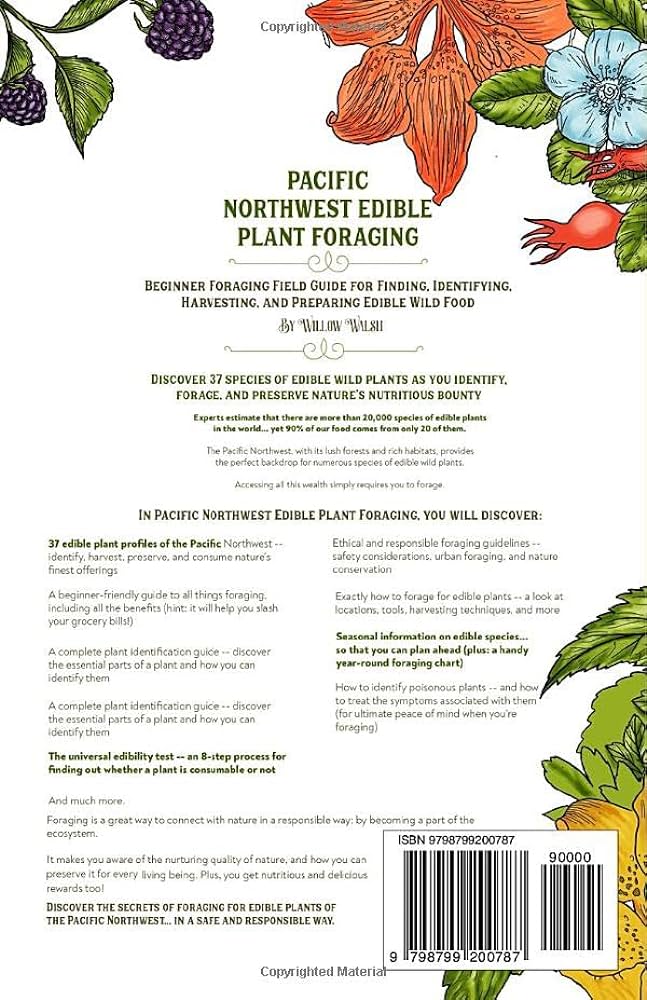Have you ever wanted to explore the wonders of nature and discover delicious wild mushrooms? Foraging for wild mushrooms can be an exciting and rewarding experience, allowing you to connect with the natural world and enjoy the thrill of finding edible treasures in the forest.
Whether you are a novice or an experienced forager, creating a successful wild mushrooms foraging experience requires a combination of preparation, knowledge, and caution. In this guide, we will explore the essential steps to help you create a safe and enjoyable wild mushrooms foraging adventure.

Credit: en.wikipedia.org
Know Your Mushrooms
Before heading out to forage for wild mushrooms, it is crucial to develop a good understanding of the different types of mushrooms that grow in your area. Some species are delicious and safe to eat, while others can be toxic or can cause allergic reactions.
Consider learning about some common edible wild mushrooms such as Chanterelles, Morels, Porcini, and Hedgehogs. Knowing the distinct features and characteristics of each species is essential for safe foraging.
Location, Location, Location
One of the most important aspects of creating a successful wild mushrooms foraging experience is choosing the right location. Wild mushrooms tend to thrive in specific environments, such as damp, wooded areas, and near certain tree species.
Researching and identifying suitable foraging locations, such as local forests, nature reserves, or public lands, is crucial. It’s also essential to obtain appropriate permissions if required and to respect any regulations regarding foraging in specific areas.
Timing Is Everything
Knowing when to go foraging for wild mushrooms is key to maximizing your chances of a successful harvest. Different mushroom species have specific growing seasons, which are influenced by factors such as temperature, humidity, and rainfall.
For example, Morel mushrooms often appear in the spring, while Chanterelles are typically found in the summer and fall. By understanding the seasonal patterns of wild mushrooms, you can plan your foraging trips accordingly and increase your chances of finding a bountiful harvest.
Essential Foraging Tools
Equipping yourself with the right tools can enhance your wild mushroom foraging experience. Here are some essential items to consider bringing along on your foraging trips:
| Essential Foraging Tools |
|---|
| Sharp knife for cutting mushrooms |
| Basket or mesh bag for collecting mushrooms |
| Field guide or reliable mushroom identification book |
| Small brush for cleaning mushrooms |
Guided Foraging Tours
If you are new to wild mushroom foraging or simply want to enhance your skills and knowledge, consider joining a guided foraging tour. These tours are led by experienced foragers who can provide valuable insights into mushroom identification, safe foraging practices, and the ecological significance of wild mushrooms.
Guided foraging tours also offer an excellent opportunity to connect with like-minded individuals, share experiences, and learn from others who have a passion for exploring nature and discovering wild mushrooms.

Credit: www.amazon.com
Stay Safe and Responsible
While foraging for wild mushrooms can be an exhilarating experience, it’s essential to prioritize safety and responsibility. Here are some important guidelines to keep in mind:
- Never consume a wild mushroom unless you are 100% certain of its identification and edibility.
- Dispose of any harvested mushrooms responsibly, and avoid damaging the environment during your foraging activities.
- Always respect private property and obtain permission before foraging on any private land.
- Be aware of any local regulations or restrictions related to foraging for wild mushrooms in certain areas.
Enjoy the Fruits of Your Labor
After a successful foraging trip, it’s time to savor the culinary delights of your wild mushroom harvest. Whether you choose to sauté them with butter and garlic, add them to a hearty stew, or create a flavorful mushroom risotto, the possibilities are endless.
Remember to always cook wild mushrooms thoroughly before consuming them, as this helps to neutralize any potential toxins and enhances their flavor. Embrace the unique, earthy flavors of wild mushrooms and enjoy the satisfaction of knowing that you have harvested nature’s goodness.
By following these essential steps and guidelines, you can create a memorable and fulfilling wild mushroom foraging experience. Embrace the natural beauty of the forest, connect with the bounties of the earth, and revel in the joy of discovering and savoring the delicious treasures of the wild.
Frequently Asked Questions On How To Create Wild Mushrooms: A Step-by-step Guide To Harvest Nature’s Delicacy
How Do You Identify Wild Mushrooms?
Identifying wild mushrooms involves examining their characteristics such as cap shape, color, gills, spore color, and habitat.
Can Wild Mushrooms Be Poisonous?
Yes, some wild mushrooms are poisonous, and it’s crucial to be cautious when foraging. Many edible mushrooms have toxic look-alikes.
What Are Some Common Edible Wild Mushrooms?
Common edible wild mushrooms include the Morel, Chanterelle, Hen of the Woods, Oyster mushroom, and Chicken of the Woods.
Where Can You Find Wild Mushrooms?
Wild mushrooms can be found in diverse habitats like forests, grasslands, and even in your own backyard. Each species has its own preferred environment.
